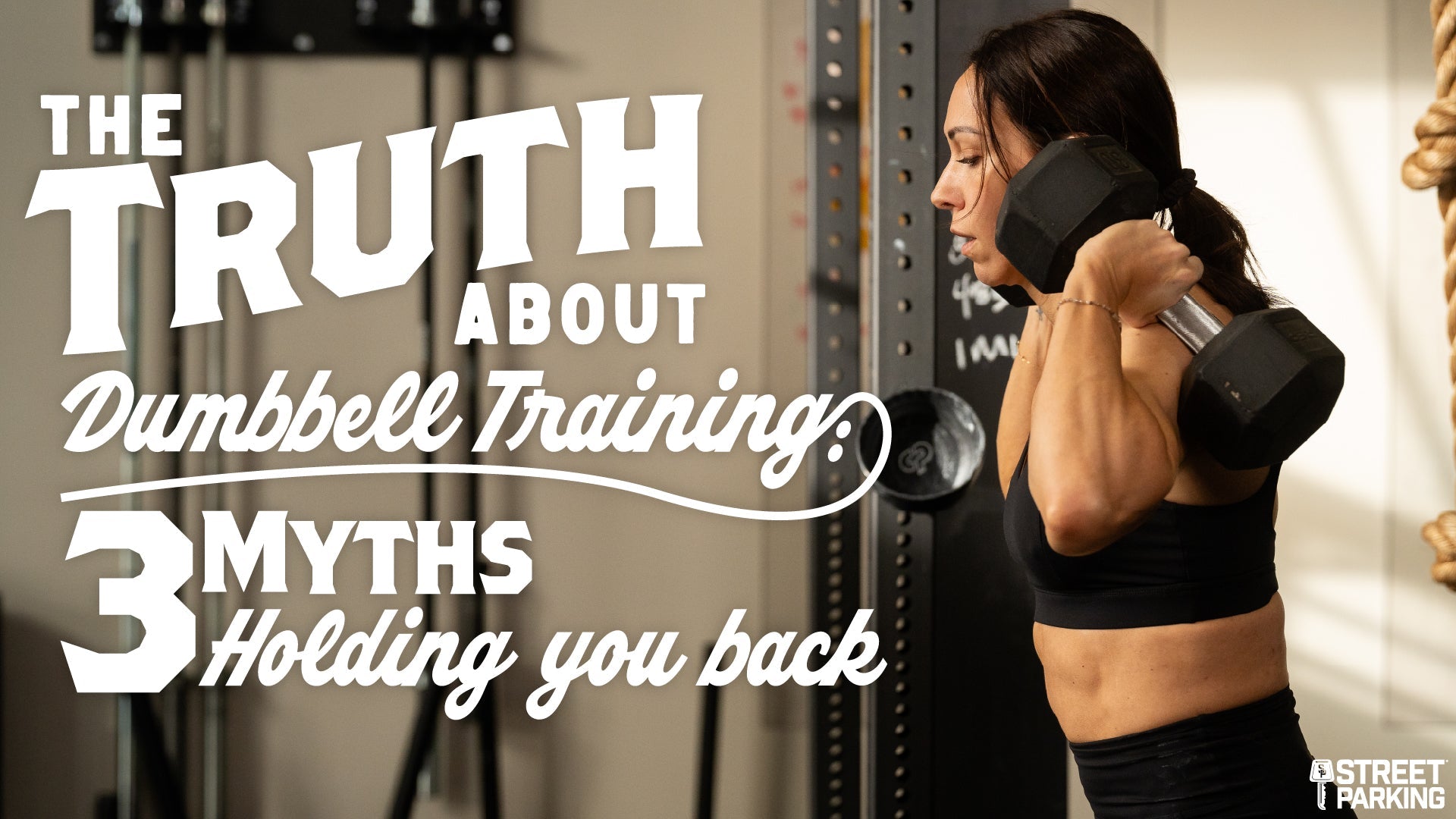
Training while sick. When to keep moving. When to take a break. What to do to feel better soon.
You’ve found your solid routine, consistently working out 3-5 days per week and eating balanced meals of protein, carbs, fats, and veggies.
You’re nailing it. Finally.
And then… out of nowhere, you find yourself SICK! Or, you’re sick again for the 2nd, 3rd, or 4th time this season.
For those with kids? It's like clockwork. Every 3-4 weeks someone is catching something, and then the whole family is sick, throwing the entire household into disarray.
We’re missing work, feeling unorganized, and less motivated.
We get it. Getting sick can be frustrating and stressful. It puts a huge damper on our daily routine and our ability to remain consistent with our fitness and nutrition.
Here are a few tips and answers to the most common questions that you might have while navigating this season.
When is it OK to Exercise, and When Should I Rest?

The first step is to evaluate your symptoms. Generally speaking, if your symptoms are “above the neck” such as a runny nose, nasal congestion, sneezing, and minor sore throat it's usually ok to keep moving. However, if you are experiencing much more severe symptoms like a fever, body aches, severe sore throat, or vomiting it's best to rest until your symptoms reside.
If your symptoms are minor we would recommend that you stay consistent by incorporating some low-intensity movement. The reason we recommend low intensity is that although your symptoms are still minor we want to keep in mind the overall stress we put on our bodies when exercising. If we go too hard in a workout we may run the risk of being sick for a more extended period of time or experiencing more severe symptoms.
Evaluate how you feel during and after your workout. If exercise is making you feel worse - probably better to take a few days off before picking back up again.
Examples of Low Intensity Include:
- A 20-30 minute easy walk (preferably in the sunshine).
- An Active Recovery session found in “specialty” extra programs.
- A Ruck session found in “specialty” extra programs.
- A Maintenance/Yoga session.
- A Daily Workout - with lowered intensity. Try adding in rest or additional rest, customizing reps and rounds, and working at a conversational pace to help control intensity.
Pro Tip:
“Staying plugged into your fitness habit will be super beneficial to your consistency. If you choose to take complete rest, fill the time you would normally exercise with something fitness-related like listening to some of our podcasts, reading a blog, or browsing through recipes.” -Coach Alex
What About Nutrition While Sick?
The old saying goes something like this: “Feed a cold and starve a fever.”
But how should you consider eating when sick?
#1 Hydration
Staying hydrated and drinking a lot of fluids could quite possibly be the MOST important thing to focus on while sick. Staying properly hydrated will help balance the water in our body especially as we are losing fluids.

3 Tips On Staying Hydrated:
- Keep your water bottle close."At a minimum, we recommend getting half your body weight in ounces of water. This is just for maintenance and if you can get more it will be super helpful as your bodyproduces additional fluids from a constant running nose, productive coughing, sweating etc. Depending on the size of your water bottle, figure out how many you need to drink per day to reach your goal." -Coach DH
- Consider supplementing your water with an electrolyte supplement. Electrolytes can help keep the amount of water in your body balanced and are especially important if you are losing essential fluids with vomiting or diarrhea.
- Drink tea. Depending on the type of tea you drink, there can be other added benefits, but nonetheless another great way to stay hydrated and often very comforting.
#2 Nutrition
Eating while sick is extremely important yet often very hard to do. Most of us just don’t FEEL like eating when we don’t feel well. In many cases, our bodies will tell us what we should and shouldn’t be eating. By no means should you be forcing yourself to eat a ton of food, but you should try to regularly eat something even if the portions are a bit smaller than what you might typically consume. Aim for foods that are easier to eat and digest.
Focus on getting the right nutrients into your body when fighting off an illness. Here are a few foods that will help speed up your recovery:
Foods To Aid In Recovery from Coach Molly:
- Protein. Prioritize your protein intake. This is often the hardest one to get in because we crave comfort foods, so taking a bit of effort to keep protein (no matter how small) in your meals can help with energy and recovery. Ways to incorporate protein easily are in soups such as chicken soup, bone broth, protein shakes, or smoothies.
- Garlic & Elderberries. Acts as an antibiotic, and has consistently been found to lessen the severity of colds and other infections.
- Chicken Soup. Provides fluids and electrolytes, is warm and soothing, and may contain anti-inflammatory properties that decrease cold symptoms. We recommend our Street Parking Chicken Soup With Ginger & Tumeric over canned soup that may not have as many nutrients.
- Tea. Steeping fruits, vegetables, herbs, and spices that are packed with anti-inflammatory properties is not only soothing but can help rid ourselves of invading pathogens and fight off our sickness.
- Honey. Works great as a cough suppressant.
- Smoothies. Smoothies can be a great way to get in some calories while sick and are generally easier to eat and digest. One great option would be to incorporate a Street Parking Smoothie to give your body the nutrients it needs to heal without needing to eat a bunch of food.

How to Start Back with Fitness AFTER Being Sick?
Take it slow.
Whether you decide to take complete rest or do low-intensity movement, we highly recommend that you take it slow.
“Don’t put any expectations on yourself when exercising, post illness. When you start moving again, focus on just that. Move at a conversational pace, and move for quality. As you start feeling good you can slowly start to increase your intensity.” -Coach Chelsie
Change your perspective on how the workout should go and focus on intentional movement.
A few examples of how you can take it slower:
- Customize your workouts to create more rest.
- Do a 20-minute AMRAP for quality instead of getting as many reps as possible.
- Do “5 Rounds For Quality” instead of “5 Rounds For Time”.
- Adjust reps or customize movements as needed to keep your heart rate lower.
Listen to your body and do what feels right for you. Customize and focus on what matters: Consistency!
What Else Can I Be Doing?
Potentially the most important tip we can provide to get you back to feeling 100% as quickly as possible: SLEEP. We know it’s easier said than done for many of us. But if you can find ANY window to get a little nap or a bit longer sleep at night - TAKE IT!
Sleep is crucial for your body to repair itself, which you need when you're sick. There are also certain immune processes that take place while you sleep that can strengthen your body's ability to fight off an illness.
DO NOT DESPAIR - YOU WILL GET THROUGH THIS!
The mental gymnastics we put ourselves through - worrying we will lose all we have worked so hard to gain in our fitness isn’t going to help matters. Whether you are able to move through your sickness at a slower pace, or are forced to rest completely - remember LIFE HAPPENS. Your one and only goal during this time is to take care of yourself so that you can come back and get back into your routine as soon as possible!
The goal of CONSISTENCY is a lifelong pursuit - and will always come with periods that challenge us and force us to slow down. Focus on what you can control - and let go of what you can’t!


